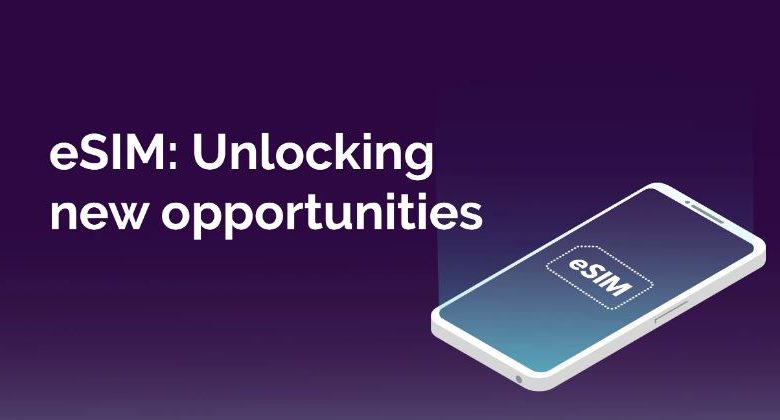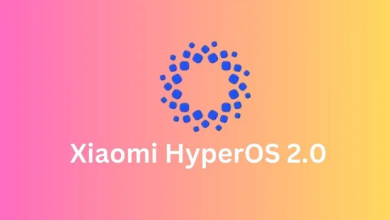What is eSim ? eSim Explained | eSIM in Nepal

Technology is changing, upgrading day-by-day and new concepts are arriving making a huge impact on how we use smartphones. Two technologies that have been a hot topic in the tech world are eSIM and 5G. As these technologies are new, some of the countries are already using and benefiting from them while the rest of the world is in the testing phase. In this article, we discuss eSIM, what is it, how to use it, eSIM in Nepal, its pros and cons, and many more.
What is eSIM?
Till now, we have been using physical SIM cards and that’s going to change with eSIM. Over the years, the size of the SIM card had been changed from full-sized to Mini, Macro, and Nano-SIM. We used to buy SIM cards from the network operator in the country, put them in a SIM tray, and use them on smartphones. Now, with eSIM, the word “Physical” will be changed and everything will be virtual.
Obviously, as the name suggests, eSIM is an electronic SIM embedded into the main board of smartphones or smartwatches or Cars, and can’t be changed. eSIM is also phrased as “eUICC (embedded Inserted Universal Circuit Card)” as it stores all the data required and use to verify the mobile network. The eSIM is rewritable and can be changed anytime.
There is a bit of conflict among those who introduced the eSIM first. Google Pixel 2, iPhone Xs Max, Surface Pro LTE are a list of devices that got eSIM first in the respective devices. After smartphones, eSIM was used in smartwatches, making its debut with Apple Watch 3. Now, a wide range of devices arrives with eSIM support, even Car got support for it.
GSMA, a global organization that works unifying the mobile ecosystem, has been actively working for eSIM to make various rules, standards and reach out to various mobile carriers to make this concept happen in every possible country. According to recent data from GSMA, more than 130 major industry players support eSIM, and consumers are already facilitated with it.
Advantages of eSIM
- Setup and use are super easy without the need for insertion and ejection of physical Sim.
- A range of new enhanced mobile-connected devices and will boos IoT(Internet of Things)
- The user can easily switch between the Mobile networks.
- Anyone making maximum numbers of international visits can be benefited by a huge margin.
Smartphones Supporting eSIM in Nepal
Apple, Samsung, and Google are leading the race with the maximum number of smartphones that can support eSIM. But sadly, Google Pixel smartphones are not available in the Nepali market.
Apple iPhones
- iPhone 13, iPhone 13 Pro, iPhone 13 Pro Max, iPhone 13 Mini
- iPhone 12, 12 Pro, 12 Pro Max, 12 Mini
- iPhone SE
- iPhone 11, 11 Pro, 11 Pro Max
- iPhone XS, XS Max
- iPhone XR
Samsung Smartphones
- Samsung Galaxy S21+ 5G
- Samsung Galaxy S21 Ultra 5G
- Samsung Galaxy Note 20 Series
- Samsung Fold LTE model
- Samsung Galaxy Z Fold3 5G
- Samsung Galaxy Z Flip 5G
- Samsung Galaxy Z Flip
- Samsung Galaxy S20 Series
- Samsung Galaxy Fold
Also Read:
- Is Your NTC and NCELL SIM Registered to You? Find How & Why to Change it
- Khalti brings “Khalti ma iPhone 13” | Chance to Win iPhone 13
- [Top 5] Best Budget Smartwatch Under Rs. 10000 in Nepal
How to Use or Activate eSIM?
Just like 5G Network, two important requirements for eSIM are:
- You must have a smartphone or smartwatch or any other device which can support eSIM.
- eSIM support should be available by the Mobile Carrier in the country.
Once both of these are available to us, we can finally try eSIM. To active eSIM in your supported smartphone, you need to contact the mobile carrier which has eSIM services, fill out required forms or documents. Then, the administrators will provide support for eSIM to your smartphones.
If you wished to change the mobile carrier of the eSIM then you just have to activate the service from the new one. The switching of eSIM support of mobile carriers can be done within smartphones. If your smartphones support dual eSIM then both of them can be used at the same time or one Physical SIM and one eSIM can also be used simultaneously. Also, you can choose one SIM as default for calls, messages, and Data.
eSIM in Nepal
Two technologies that are already in practice in the international world but yet to arrive in Nepal are eSIM and 5G Network. As soon as we adopt these technologies, we can benefit a lot from them. Upgrade in technology should be done as soon as possible else we’ll fall far behind in the competition with the outer world.
Sorry to say but eSIM is not available in Nepal and we can’t use them currently. Unless major mobile carrier like NTC or Ncell brings them to Nepal, we have no option to keep waiting. There was various built-up news regarding the eSIM in Nepal but none of them were actually implemented. Back in 2019, CG Telecom had a collab with Huawei Services and was about to bring eSIM to Nepal. But today, even CG Telecom doesn’t exist and they end up with CG NET.
Recently, there is a ray of hope is NTC has taken eSIM seriously and working for it. According to Dilliram Adhikari, Managing Director, ‘eSIM is the future of mobile communications. This is why NTC is kickstarting the service next fiscal year.’ Nepal Telecom is planning to introduce eSIM in Nepal by the fiscal year 078/79 and distribute 8 million eSIM cards within 12 months.
With this plan and initiative from NTC, Ncell might be interested in bringing eSIM in Nepal as well or maybe working secretly but noting from Ncell regarding eSIM has surfaced till now.
Better late than never, we hope to see any telecom bringing eSIM in Nepal ASAP so we can use it, benefited from it and lives with the technology standard of the outside world.



